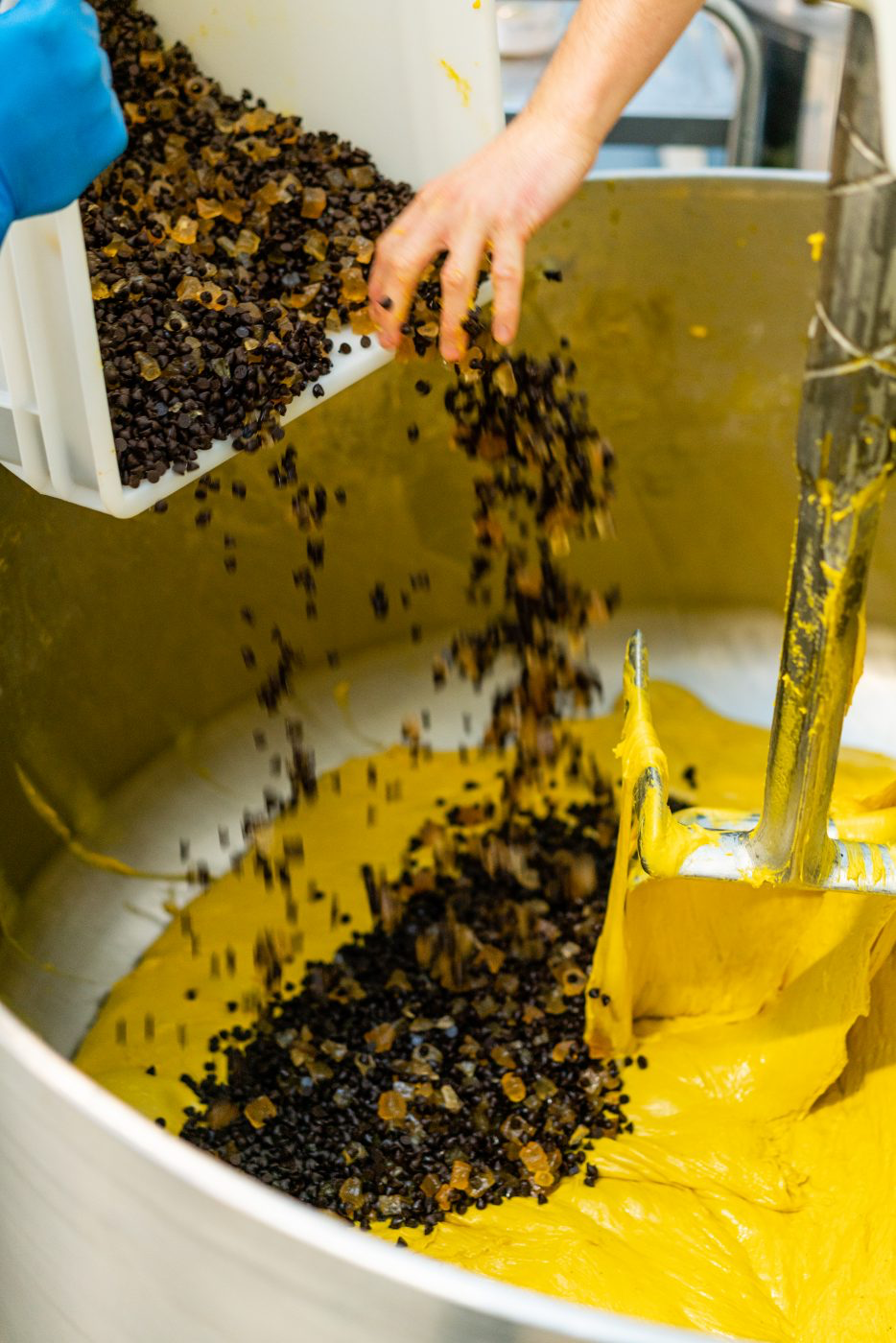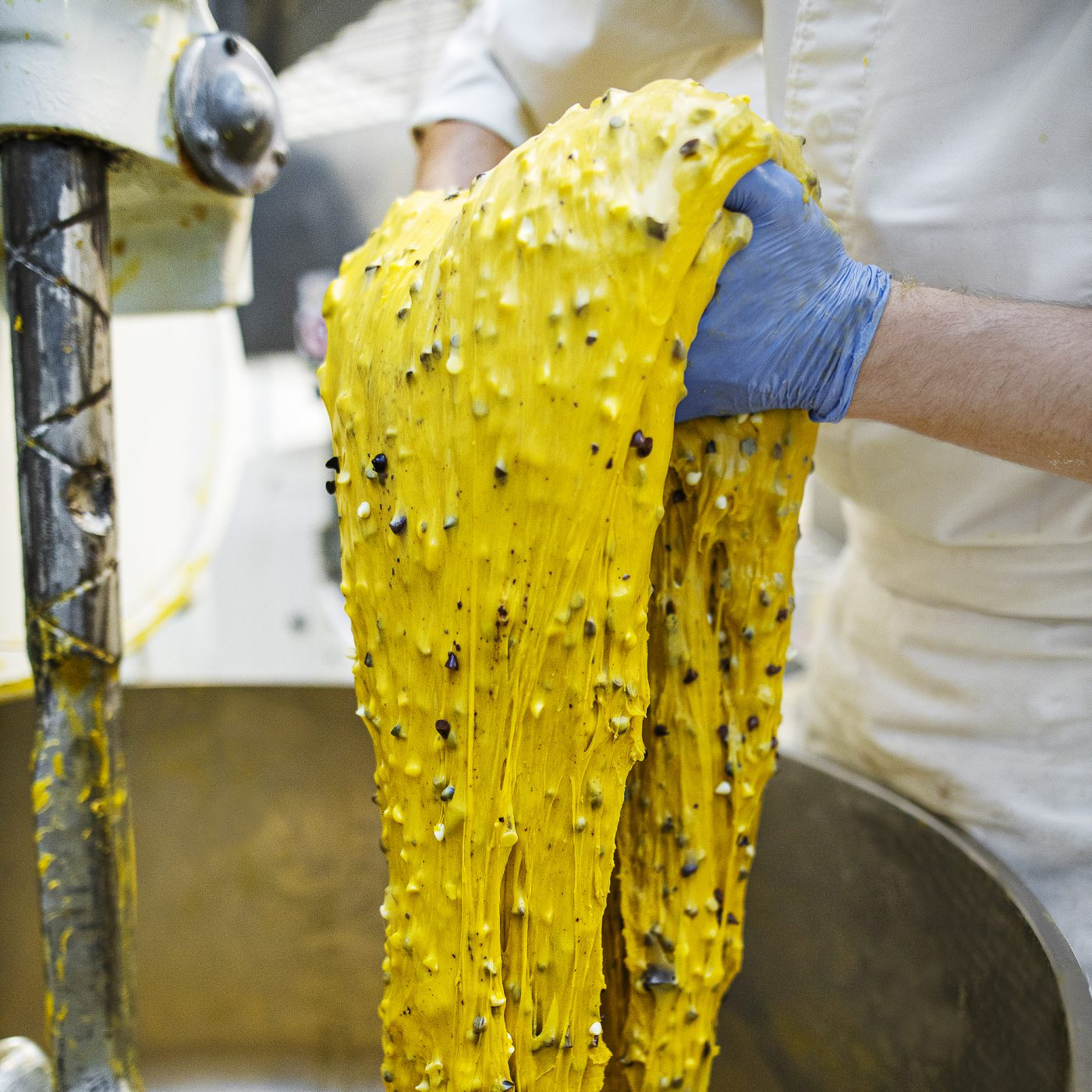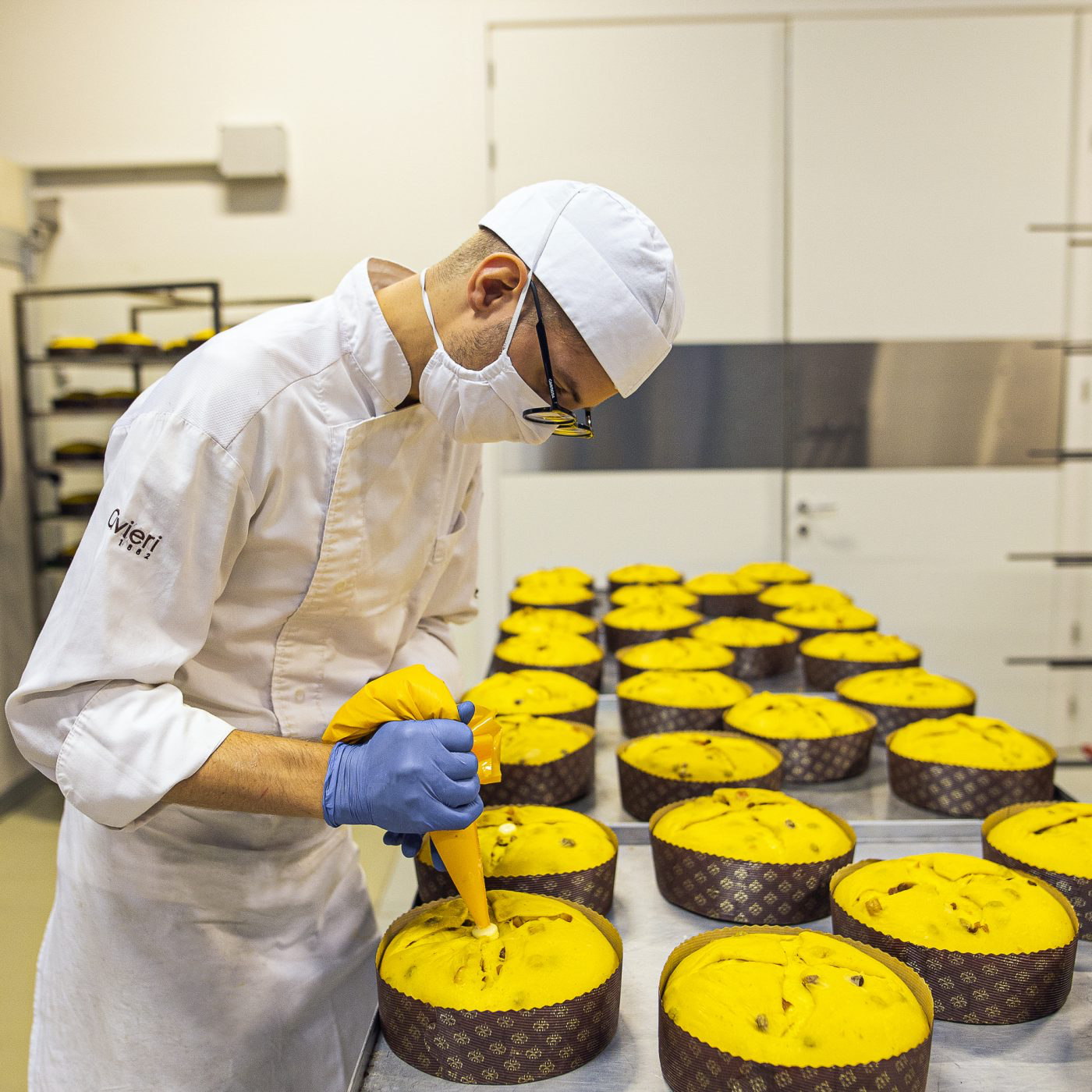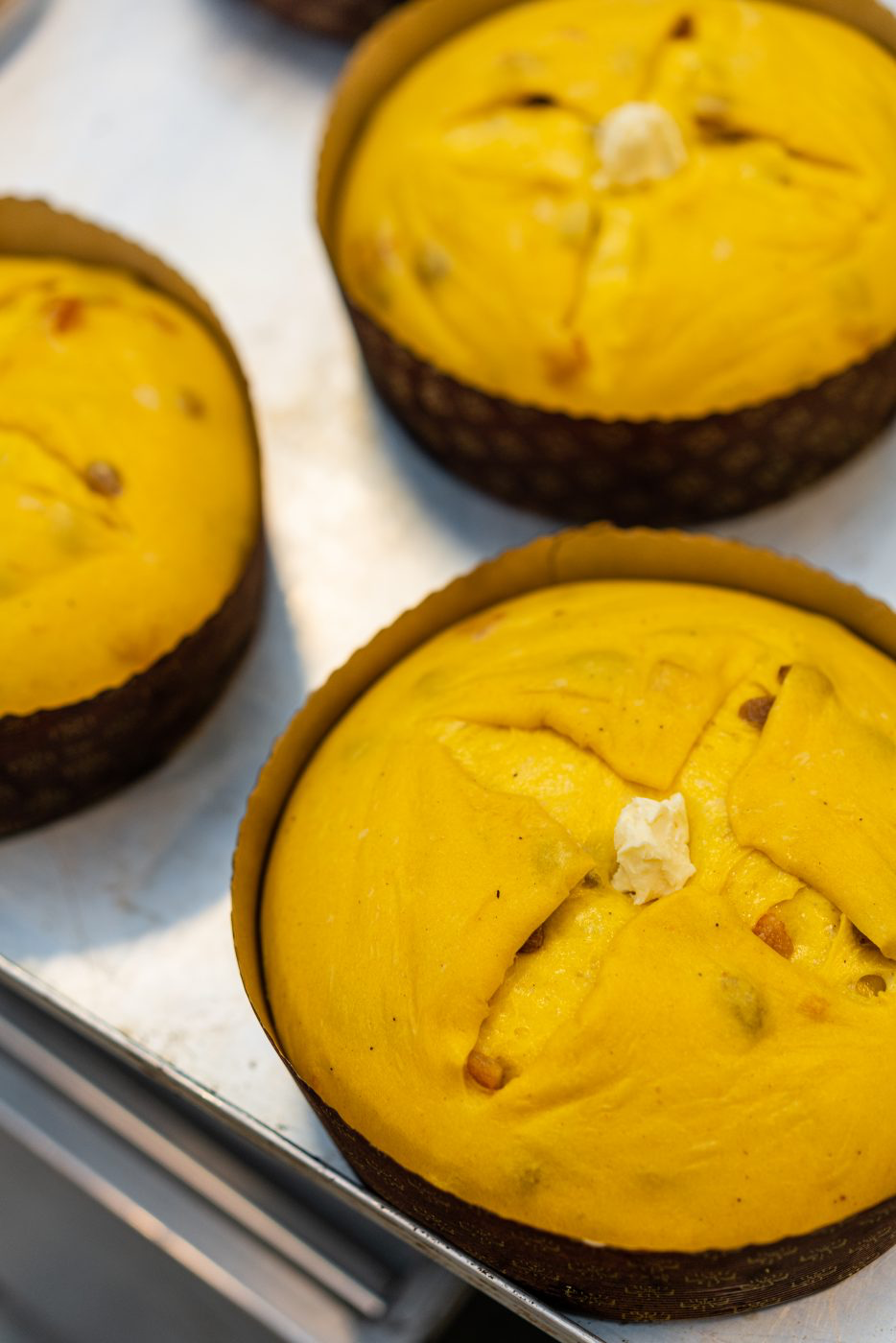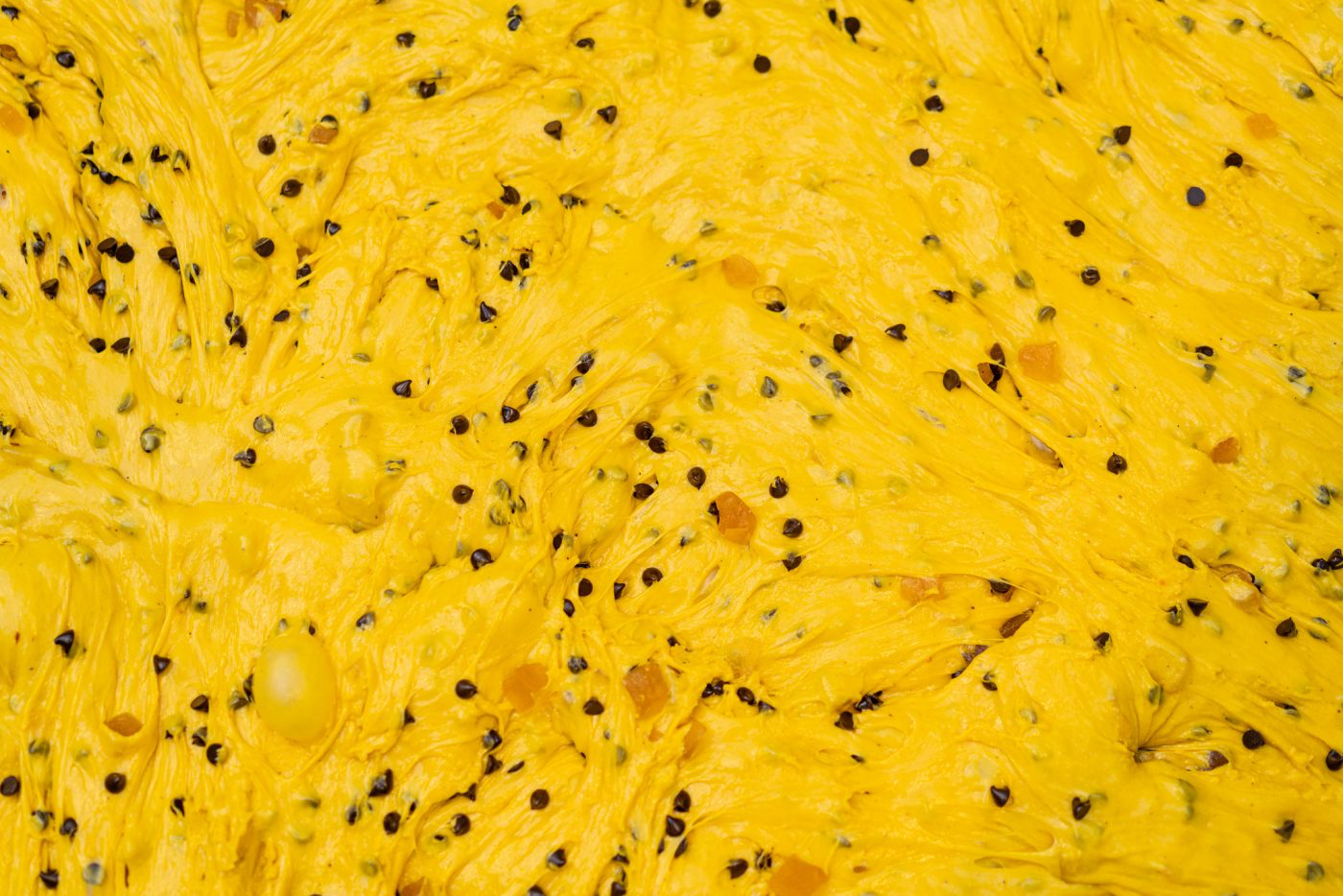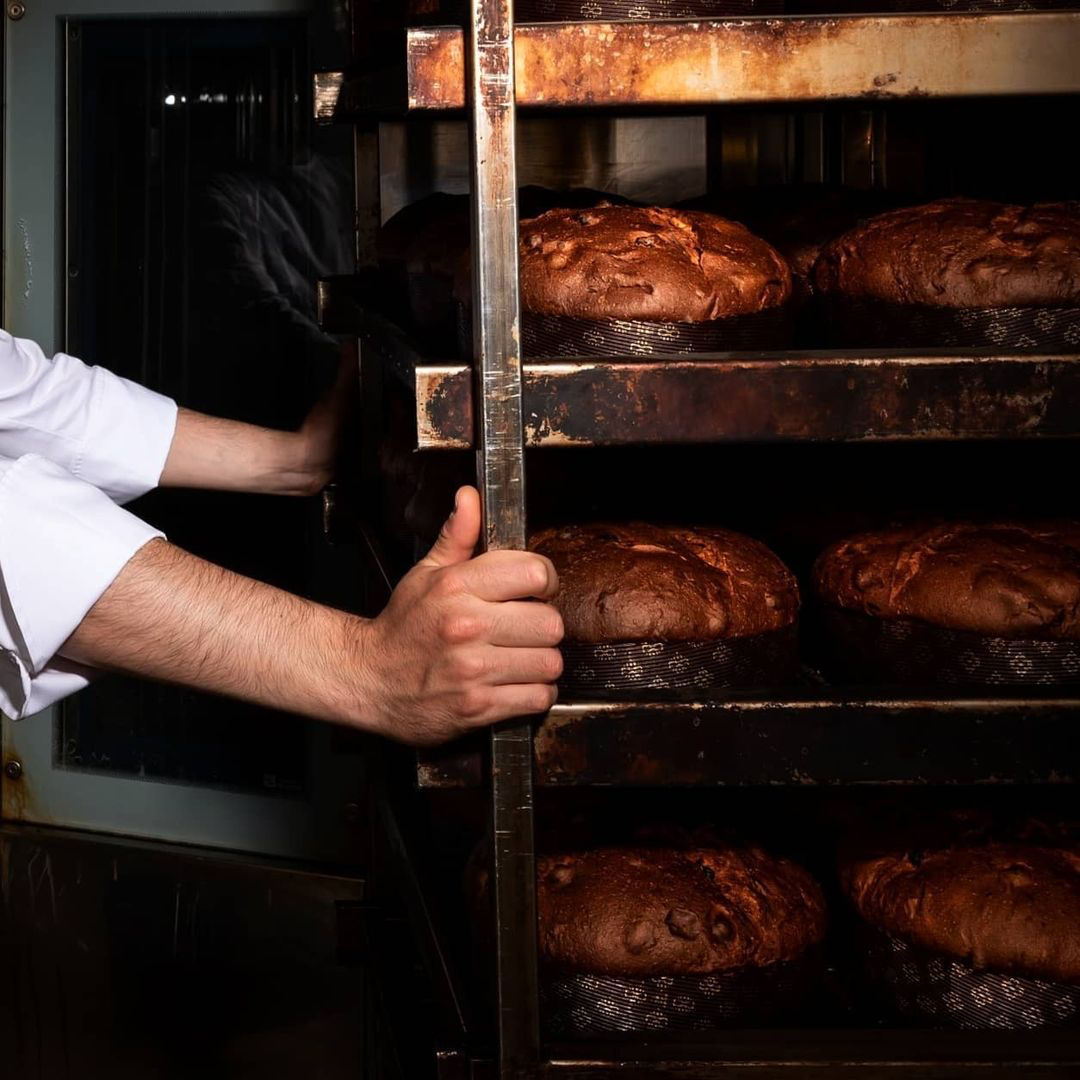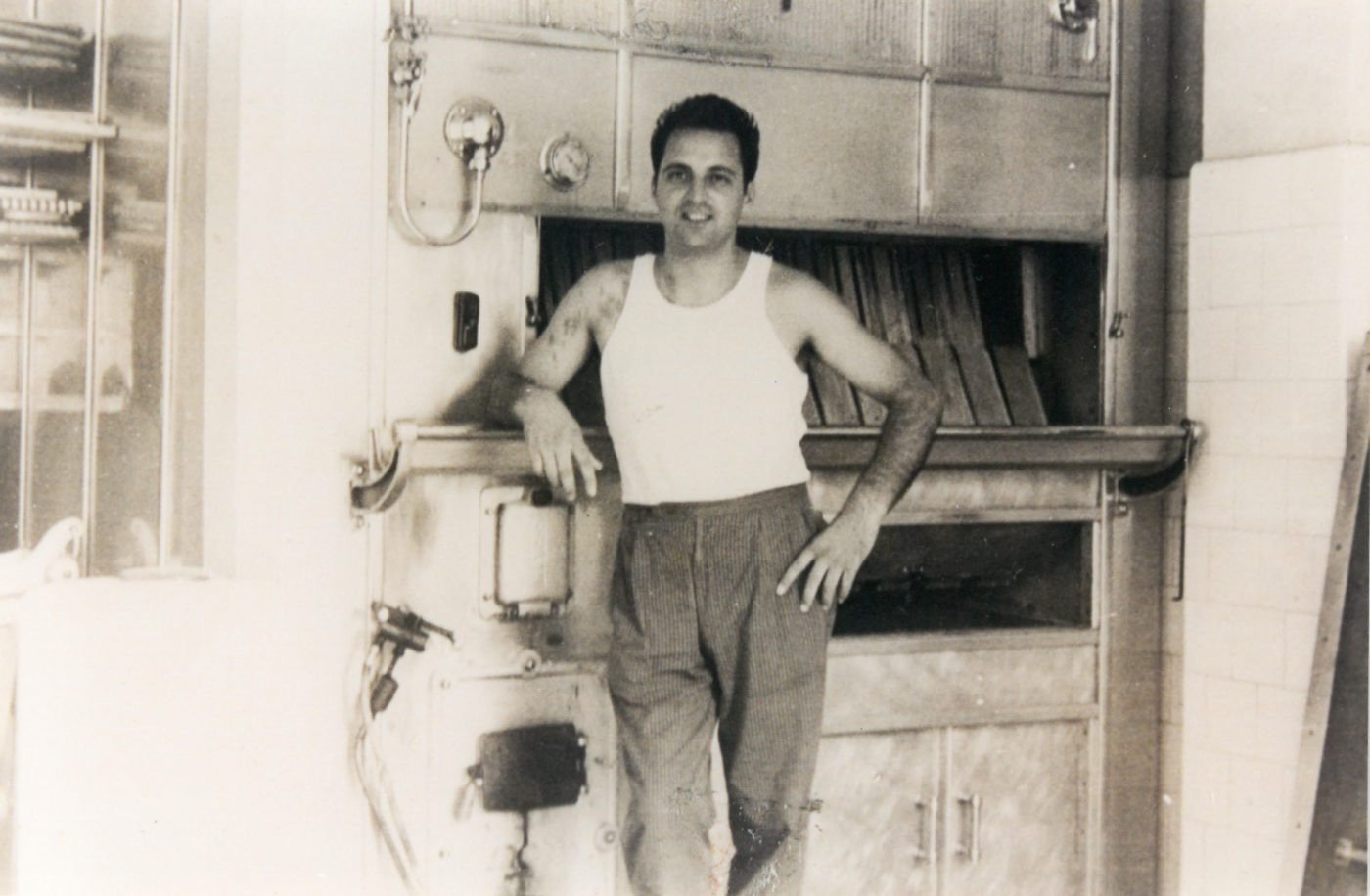PANETTONE!!! - ITALY SEGRETA
By the time my husband rolled me into Milan’s Buzzi Hospital maternity ward in the early hours of Christmas two years ago, our ultimate gift was already two weeks late. Among the small details I remember about the twenty-plus hours in labor, was a little red box on the lunch tray ensconcing a buttery treat that livened me with a precious hint of festivity in between slowly intensifying contractions. It was a mini panettone, a soft and airy reminder that it was Christmas. All panettone is defined by its sweet brioche-like bread quality. It is airy yet moist, cylindrical in shape, and always presented in its entirety before being cut in wedges. I hardly missed the uniquely Milanese tradition of adding a dollop of Marsala-spiked mascarpone or the glass of dry spumante to wash it down (although I would not have minded it!). The young elf hat-adorned hospital attendants grimaced with my one too many demands. Night fell, but my baby didn’t. My time with my own personal size panettone would be the last peaceful pause before an emergency C-section. And though a visitor snuck in a few Marchesi pastries the next morning — nothing would compare to the memory of my sweet little panettone.
Throughout childhood in suburban New York, Zia Maria, a family friend, was our gateway to all things Italian. Thanks to her our Christmas meal always ended with a real panettone from Italy. The domed cake-bread hybrid, came in an elegant big red hat-like box. As Zia Maria took the knife to it, we’d all hold our breath in anticipation of its collapse and sigh in relief as the panettone kept its form while stylishly and imperceptibly bowing. My brother and I picked out the raisins and candied fruit and ripped the dough sheaths before lowering them in our mouths. I’ve come to learn that this was all too Italian. “Children are expected to pick out the raisins and canditi that make panettone more of an adult dessert,” Italian-born San Francisco Bay Area based chef and my friend Viola Buitoni explained to me by phone. “My mother used to say she was fat because she was given all the leftovers from her five children.”
Panettone has by now claimed a place in Christmas tables around the world but it is originally from my adoptive Milan. Some say it was first requested in the XV century by local ruler Ludovico Sforza who wanted a sweet bread with grapes on the Christmas table, others say that it was a fallen bread made by a baker with heart woes and he added dried fruit to make it look and taste fancy. Whatever its inception, it is a fact that Milan’s Biblioteca Ambrosiana jealously guards the 1470’s manuscript that first mentions the celebratory sweet. The domed shape was always the cake’s distinctive trait, however, panettone remained stout, bread-like and mostly local until the 1920’s when the Motta family introduced strong leavening suitable to mass production creating the iconic alto (tall) shape.
Stanislao Porzio, a food scholar and author of the 2007 book Il Panettone: Storia, Leggende, Segreti e Fortune di un Protagonista del Natale, the most comprehensive Italian book on the subject, writes that panettone was first mass produced when Motta opened a factory on viale Corsica in Milan with a grand innovation for the time: a thirty-meter-long oven. Motta helped shape the industrial market through the years, though their mother yeast still remains in the ingredient list even as production has expanded to South America and beyond.
Since Motta’s innovations, the tocque-shaped sweet has been such a Milanese symbol that in the 1980s, the late designer Enzo Mari named the tiny concrete traffic bollards he designed for the city after it.
A handful of bakeries sell panettone year-round for breakfast in Milan, but it is during the winter holidays that panettone becomes ubiquitous throughout Italy, and becomes a real obsession for the Milanesi. Every November, as Christmas approaches, Milan hosts a few large panettone festivals. Under the guise of competitions, these fairs’ ultimate goal is to create selling opportunities for small bakeries around Italy who relish in the Northern Italian embrace of new styles of panettone.
The panettone obsessed food writer Margo Schachter led me around I Maestri del Panettone (The Masters of Panettone) last year. Twenty master pastry chefs showcase more than 150 panettoni during a two day pop-up fair. After braving a line snaking around the block, one finds a long Last Supper-style table of judges who have been tasting panettone all morning in front of a captive audience. Crowds flock to the stands of winners, in an effort to score at least one of the event’s finalists. They stream out of the exhibit hall arms filled with as many panettone boxes as they can carry. At the end of the day, over 15,000 panettone will have been sold.
Porzio went even further thirteen years ago when he founded the fair Re Panettone – King Panettone. All participating pasticcerie are required to guarantee that their products do not contain mono- and diglycerides commonly added to industrial foods to increase their shelf life. His festival celebrates panettone that follows Italy’s ministerial decree stating that panettone must be made with naturally fermented starter, is at least 16% butter and contains fresh eggs — in short, simple ingredients, without additives and preservatives. It also cannot contain brewer’s yeast, starch, vegetable fats (excluding the cocoa butter in chocolate), whey and derivatives, soy lecithin, dyes or preservatives. Porzio is even petitioning for the art of panettone making to be added to UNESCO’s Representative List of the Intangible Cultural Heritage of Humanity. It would join Neapolitan-style pizza that won status in 2017 and the Mediterranean Diet in 2013. This effort is to preserve the role of the artisan and preserve purity, ritual and rules that distinguish the marvellous from the ugly — in the words of many panettone enthusiasts including master baker Nicola Olivieri, “real from fake.”
Traditional panettone classico Milanese is enriched with plump raisins and canditi — orange, lemon peel and Sicilian citron that are candied — the purist preference. Things started changing in the 70’s when chocolate panettone gained popularity. Buitoni still remembers the brouhaha that came with what by now is an accepted, even quaint, alternative. It still takes a stringent pastry pedigree to play with tradition, but a few young, forward thinking bakers are experimenting with fermentations and bold flavors like ginger, black tea and pistachio. An increasing demand for panettone dotted with dried figs and sour cherries, enriched with moscato, filled with gianduja or even flavored with saffron is prompting regional trends and pushing boundaries. A successful pairing can create the right buzz, but a true mastery of fermentation is required to be in the running as a panettone worth springing for.
If you are not Milanese, you may have a wider angle on panettone. According to Schachter, Southern Italians like their panettone sweeter and fluffier with a preference for short basso panettone often pale in color from baking at lower temperatures. Buitoni, who hails from the central region of Umbria, remembers both kinds from her childhood, the artigianale alto arrived with her Zia who lived and worked in Milano, the basso, which she knew as Piemontese, was coveted for its sugar and hazelnuts Dutch crunch-like glaze by kids. As the world of panettone multiplies like pantone colors in Italy’s pastry shops, markets and grocery stores, Italians categorize three groups of panettone that also reflect their price points — industriale, semi-artigianale and artigianale.
For most or all of the last three decades of the 20th century, Nestle effectively cornered industrial panettone making, with outright ownership or controlling interests in Motta, Alemagna and Perugina, three of the largest producers. Interestingly, this was also the period in which panettone transitioned from a specialty niche product to a household name. Even though in 2009, Bauli, a Verona based industrial baked goods maker, bought Motta and Alemagna back into their original side of the Alps, there is still little difference between a big box panettone and the next, making price the discriminating factor. In fact, it is widely known that industrial supermarket panettone is often sold below cost (5-10 euros) as a means to lure in holiday shoppers. An industrial panettone can have a shelf life in excess of six months.
Semi-artisanal panettone is made by medium size, family owned outfits who specialize in holiday sweets. They use high quality ingredients but have the technology to make batches large enough to satisfy the demands of stores like Eataly. A careful eye to packaging design typically distinguishes panettone in this category, they’re coquettishly wrapped in expensive paper with intricate drawings and glittery ribbons, at times packed in keepsake tins. Last year at Eataly in Milan I counted at least a dozen different panettoni: gluten free, wholewheat blueberry, fig and Malvasia wine, pistachio cream and more. Semi-artisanal panettoni range between 15 and 25 euros and their makers typically recommend a best by date that does not exceed three months.
Panettone artigianale from a local baker starts at 20 euros and can go up to 40 when made by one of Milano’s legendary pastry shops or Italy’s revered master bakers. You are paying for more than the guarantee of impeccable texture and flavor: you are supporting the dedication that has stewarded the unpredictability of fermentation to perfection over several days, you are rewarding the passion of an artisan who has toiled in the kitchen so you didn’t have to.
These masterpieces, when not wrapped to order, are stylishly and simply clad, they don’t need designer clothing to take center stage. No panettone artigianale worthy of his name will last longer than a month. On trend, Italian fashion houses Armani and Gucci offer signature panettoni in branded collectible tins for the holidays, a pezzo forte for fashionistas and much more affordable than a handbag. Dolce & Gabbana collaborates with historic Sicilian pasticceria Fiasconaro to create two variations sold in Italy for 50 euros.
Buitoni recalls how hard it was to find panettone when she moved to New York City in the 80’s. She’d have to brave the crowds at Balducci’s in the East Village just to find commercial brands like Perugina at astronomical prices. Today, panettone is as common on shelves as peanut butter, and as expected on holiday tables as fruitcake. But while all panettone produced in Italy is held to the standards of the ministerial decree, even the cheap industriale, requirements are broken and circumvented once production expands abroad. Most Americans around Christmastime eat “an industrial product packed with a ton of preservatives and low quality ingredients. It is made in July and August and exported in advance to sit on the shelves for weeks leading up to Christmas,” says master baker Nicola Olivieri.
But the trend is slowly changing. These days panettone semi-artigianale is available at better stores and online sellers. And, albeit very slowly, artigianale has been finding its way to the increasingly discerning palates of American in urban areas. At Buitoni’s shop Buitoni&Garretti, a fine Italian foods store that she and her Milanese catering partner, Yolanda Garretti, owned and operated between 1999 and 2001 they paid a fortune to have panettone artigianale from famed pastry shop Gattullo Milano shipped to them at Christmas time. They hoped they would at least cover shipping costs and brought twenty into their shop to sell to their more discerning clients. Even at $40 for a small and $65 for a large, they sold out in two days. The following holiday season, people started reserving their panettone artigianale for the holidays in September.
Shortly thereafter Gustiamo in the Bronx started importing the outstanding panettone artigianale made by Luigi Biasetto, a Belgian born award-winning pastry master of Venetian descent whose name is whispered in respect by those in the know. Even with a price tag of $60 plus tax and shipping, Gustiamo has sold four times what they normally sell this year.
One of Italy’s new kids on the block is Olivieri. A 6th generation baker, he grew up in Arzignano, a small town in the Veneto region. After a pastry stage in Australia, he returned to his hometown to transform and expand the family business. Today, he co-owns Olivieri 1882, a modern pasticceria with traditional roots, in a repurposed warehouse more reminiscent of Williamsburg than Venice. The all-day Olivieri shop, designed by local architects AMAA Studio, is “a sort of ‘piazza’ where locals can meet and drink high quality coffee and pastries” according to Olivieri. An adjoined restaurant he conceived opens at night with naturally-leavened sourdough pizza and natural wine. Despite the unlikely location of the shop, Nicola Olivieri’s innovative creations are making waves in Italy’s pastry corridors; his work rivals that of Milan and Rome’s dernier cri pastry destinations. While Olivieri got his panettone feet wet as a kid in the family’s shop, he credits famed yeast guru Francesca Morandin as his maestra – mentor. Even Olivieri’s business model is innovative: instead of working with a far away distributor, as of this year he retails his panettone online, sending it fresh, direct from Arzignano to the lucky buyer.
The NYT’s Tejal Rao wrote an article in 2017 entitled “Panettone Has Become an Obsession for American Bakers.” She shares the stories of a handful of them including New Yorker Jim Lahey, the founder of Sullivan Street Bakery, rose to fame for his focaccia and no-knead bread recipe, and began making a small number of panettone every Christmas five years ago. While his run was previously so small you’d have to book months in advance, they are now available around the US on Goldbelly. The best case in point is Roy Shvartzapel who, like Olivieri, believes that panettone should stay on the shelf for a month at maximum. Roy’s tall panettone with large, elusive air bubbles is available year-round — his Instagram photos will convert any skeptic but his products are no secret — in fact he sells out often. On The David Chang Show podcast, Shvartzapel shares his heartwarming journey as a pastry chef learning and studying with many great chefs. Humbly, he credits his experience with Italian pastry god Iginio Massari at his laboratorio in Brescia as the most formative, prompting his pursuit of a perfect panettone and his subsequent success.
In the Bay Area, many also swear by the panettone made by Manresa Bread, owned by 3 Michelin star chef, David Kinch. Manresa will ship from any of his 3 locations.
Whichever panettone suits your taste and budget, there is one rule you need to observe: do not finish it in one sitting, Leave at least a wedge to toast for morning-after-Christmas breakfast. To get your panettone on this Christmas, here is a short guide.
Artigianale:
Pasticceria Biasetto – Padova, Veneto, Italy via Bronx, New York’s Gustiamo
Olivieri 1882 – Arzignano, Veneto, Italy direct from website
From Roy – San Francisco, CA direct from website
Sullivan Street Bakery, New York, NY via Goldbelly
Manresa Bakery, California
Semi-artigianale:
Loison is a Verona based family run high end baked goods producer whose Christmas goods are available online from San Francisco importer Howard Case
Albertengo has been making panettone Piemontese in the province of Cuneo for over a century. Find their delights on iGourmet
Perbellini’s chocolate and orange creation, also produced in the Verona area is worth every penny. Find it at Boston’s food lovers’ paradise Formaggio Kitchen
If you happen to be in Milano these artisans make a few different types of panettone on a limited run so it’s best to order ahead.
LePolveri is a micro panificio with a line out the door and sells panettone by reservation only.
Panificio Davide Longoni is a destination for bread in Milan as Longoni is known for experimenting with non-traditional flours, ancient ancient grains and fermentations. His panettone can be found in his shop or on cosaporto.it.
Pasticceria Polenghi is a family business run by Angelo, in his 70s, founded by his mother in Milan’s city center in 1945. He only makes only 400 classico Milanese and still uses the cooling baskets his family passed down to him. Most of his customers know him by name.
By Elizabeth Jones first published on Italy Segreta



